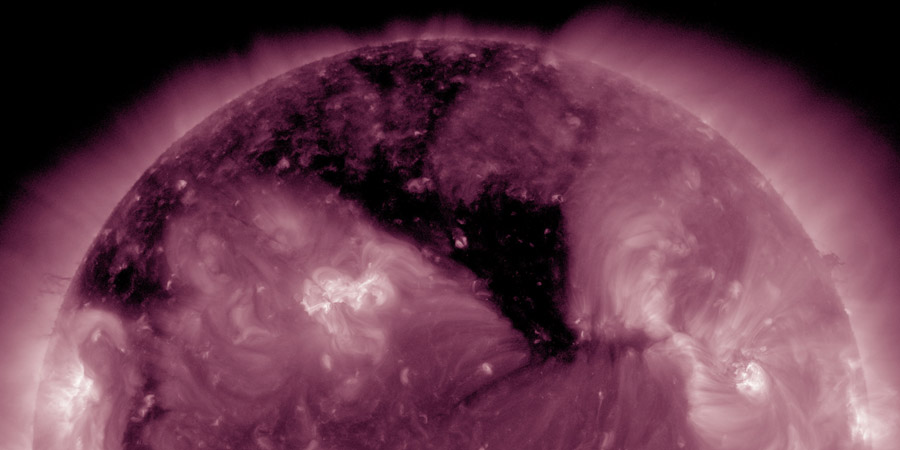Coronal hole faces Earth
Friday, 13 May 2016 17:52 UTC

A southern extension of the northern hemisphere polar coronal hole is now facing Earth.
While this coronal hole is at a fairly high latitude, the NOAA SWPC thinks it could bring us minor G1 geomagnetic storm conditions on Monday, 16 May 2016.
Transit of Mercury
Back on Monday we witnessed one of the astronomical highlights of this year: the transit of Mercury. We're you unable to see this event with your own eyes or otherwise missed it? Then no worries, on our YouTube channel we have a video of the transit as captured by NASA's Solar Dynamics Observatory.
Thank you for reading this article! Did you have any trouble with the technical terms used in this article? Our help section is the place to be where you can find in-depth articles, a FAQ and a list with common abbreviations. Still puzzled? Just post on our forum where we will help you the best we can!
Latest news
Latest forum messages
Support SpaceWeatherLive.com!
A lot of people come to SpaceWeatherLive to follow the Sun's activity or if there is aurora to be seen, but with more traffic comes higher server costs. Consider a donation if you enjoy SpaceWeatherLive so we can keep the website online!

Space weather facts
| Last X-flare | 2025/03/28 | X1.1 |
| Last M-flare | 2025/04/01 | M5.6 |
| Last geomagnetic storm | 2025/03/27 | Kp5 (G1) |
| Spotless days | |
|---|---|
| Last spotless day | 2022/06/08 |
| Monthly mean Sunspot Number | |
|---|---|
| February 2025 | 154.6 +17.6 |
| Last 30 days | 128.5 -22.7 |


